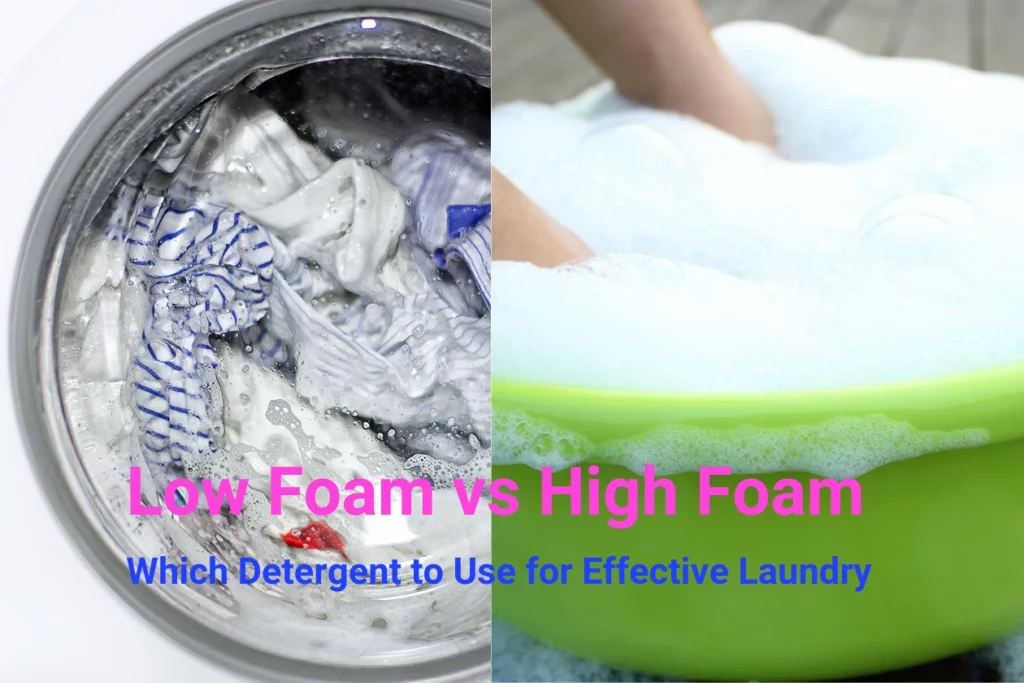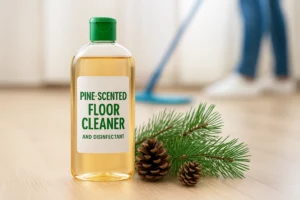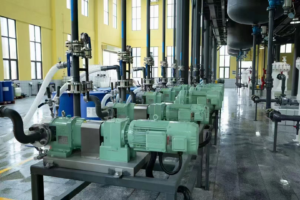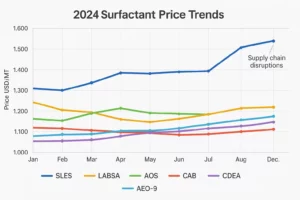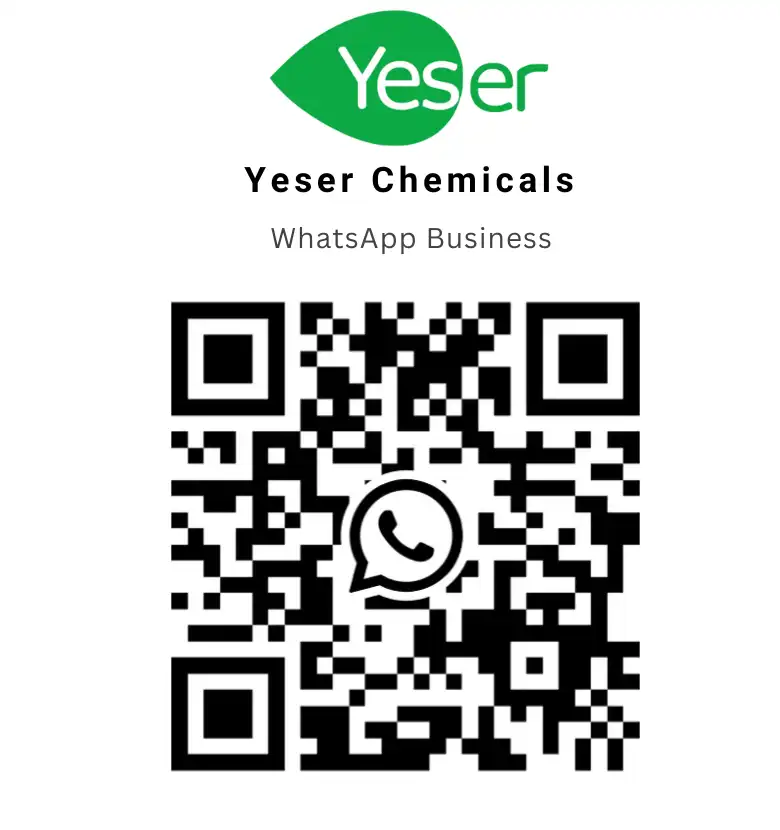Introduction
When it comes to laundry cleaning solutions, the market offers an array of detergent choices. Low foam and high foam detergents are two of the most common types, with varying characteristics and benefits. We’ll begin by providing an overview of these detergent types and explaining the importance of foam in the cleaning process.
Understanding high foam detergents
A. How high foam detergents work
High foam detergents contain surfactants that produce a significant amount of suds when mixed with water and air. These suds aid in loosening and capturing dirt, helping to remove grime from clothes and other surfaces.
B. Benefits of high foam detergents
High foam detergents can have several advantages, such as:
- Improved visual cleaning experience – Some users, especially those who wash clothes by hand find satisfaction in seeing a generous amount of lather while they do laundry, believing it indicates the effectiveness of the detergent.
- Better performance in soft water – High foam detergents perform well in areas with soft water, ensuring a thorough cleaning.
- Enhanced compatibility with traditional top-loading washing machines – These machines often require an adequate quantity of foam to provide optimal cleaning.
C. Common uses & applications
High-foam detergents are suitable for handwashing clothes, dishes, and various household chores. They work well in traditional top-loading washing machines.
D. Effectiveness in soft water
High foam detergents are more effective in soft water (water with low mineral content) as it allows the surfactants to perform optimally, resulting in better cleaning performance.
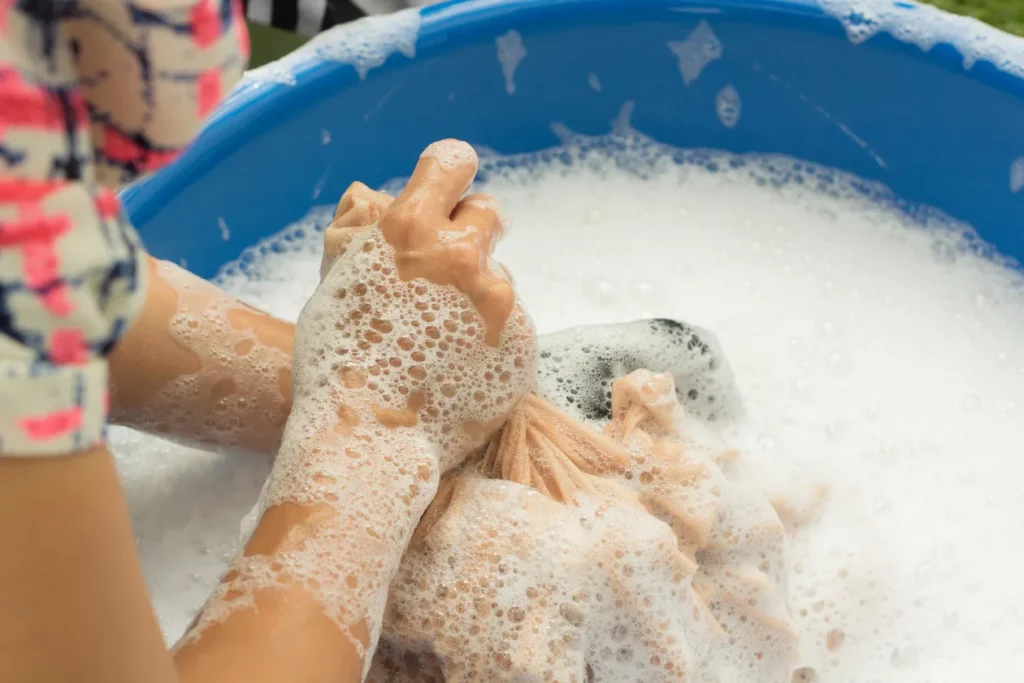
Examining low-foam detergents
A. How low foam detergents work
Low foam detergents contain a different combination of surfactants that produce fewer suds than their high foam counterparts. Despite the reduced suds, well-formulated low-foam detergents can effectively remove dirt and grime from various surfaces as well.
B. Benefits of low foam detergents
Some advantages of low-foam detergents include:
- Compatibility with front-loading and high-efficiency(HE) washing machines – These machines demand less foam to maintain adequate mechanical action for effective soil removal.
- Better performance in fully automated and ultrasonic laundry machines – Low-foam detergents don’t produce excess suds that may interfere with the machines’ cleaning mechanisms.
- Easier rinsing – Low-foam detergents can be rinsed out with less water, making them more eco-friendly.
C. Common uses & applications
Low-foam detergents are ideal for front-loading and high-efficiency(HE) washing machines, as well as automated and ultrasonic laundry machines. They can also be used for various household cleaning tasks, particularly those that don’t require much lather.
D. Compatibility with front-loading washing machines
Front-loading washing machines require low foam detergents due to their low water usage and intricate cleaning mechanisms. Excess foam can hinder the cleaning process by reducing the mechanical action necessary for effective soil removal.
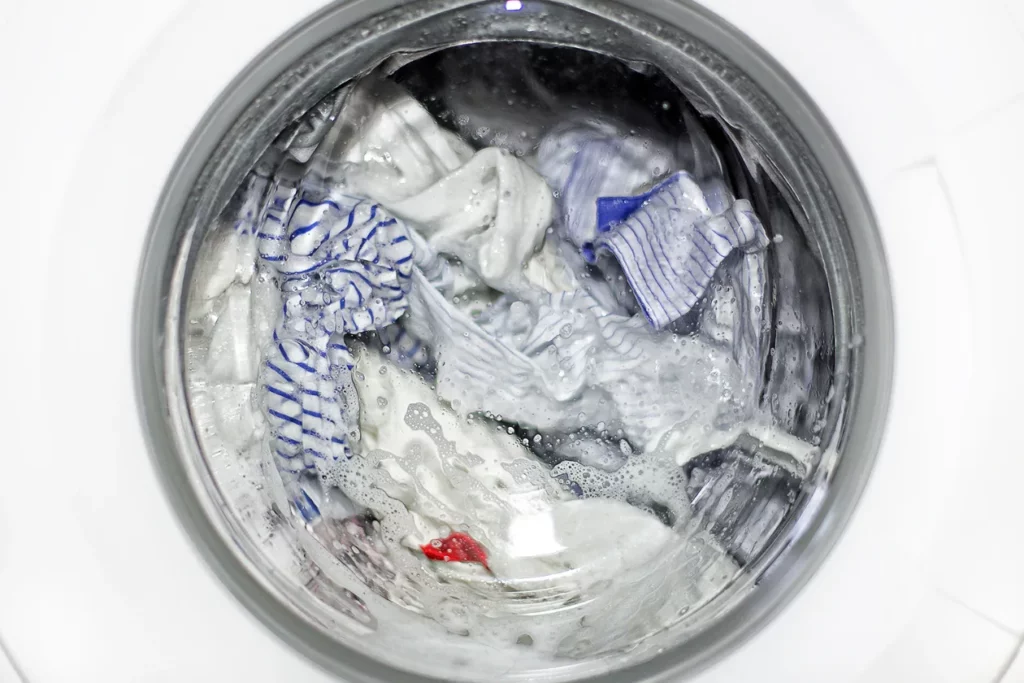
Diving into detergent ingredients
A. Role of surfactants in foam production
Surfactants or surface-active agents are the primary ingredients responsible for foam production in detergents. They lower the surface tension between liquids, such as water and oil, allowing them to mix and break down dirt and grime.
B. Types of surfactants in low-foam and high-foam detergents
Different types of surfactants contribute to low-foam and high-foam detergents’ foaming properties. Common surfactants include:
- Anionic surfactants (e.g., Linear Alkyl Benzene Sulphonic Acid(LABSA) and Sodium Lauryl Ether Sulfate(SLES)) – Typically used in high foam detergents and work well in soft water.
- Nonionic surfactants (e.g., Alcohol ethoxylates(AEO-7/ AEO-9) and Nonylphenol Ethoxylate(NP9/ NP10) ) – Used in low foam detergents, they produce fewer suds, making them suitable for front-loading machines.
- Amphoteric surfactants (e.g., Cocamidopropyl Betaine(CAPB) and Cocamidopropylamine Oxide(CAO)) – Exhibiting both anionic and cationic behavior, they can be used in combination with other surfactants to modify the foam profile.
Hard water vs. soft water: How it affects detergent performance
A. Differences between hard water and soft water
Hard water contains high mineral content, primarily calcium and magnesium ions, while soft water has low mineral content. This difference in mineral composition significantly impacts detergent efficiency.
B. Impact of water hardness on detergent efficiency
Hard water can reduce detergent efficiency as minerals react with soap, forming insoluble compounds and leaving a residue on clothes and surfaces. High foam detergents are less effective in hard water, whereas low foam detergents usually maintain their cleaning power. To learn how to optimize detergent performance in the face of water hardness, check out our detailed guide on optimizing detergent performance.
Foam detergents in ultrasonic and fully automated laundry machines
A. Low-foam detergents in automated laundry equipment
Low-foam detergents are favored for fully automated and ultrasonic laundry machines because they produce limited suds. These machines have intricate cleaning mechanisms that can be hindered by excessive foam.
B. High-foam detergents in traditional washers
Traditional top-loading washing machines generally work well with high foam detergents. The ample foam production ensures effective cleaning and provides a visually satisfying washing experience.
Foam’s influence on cleaning ability
A. The importance of mechanical action
Mechanical action, such as friction and agitation, plays a critical role in cleaning clothes and surfaces. Excess foam may compromise this mechanical action by reducing contact between clothes, water, and detergent.
B. Debunking the myth of more foam equals better cleaning
Contrary to popular belief, foam does not always indicate effective cleaning. Both low foam and high foam detergents can provide thorough cleaning if they are compatible with the water, washing machine, and cleaning task.
Choosing the right detergent for your needs
A. Factors to consider when selecting a detergent
When choosing between low foam and high foam detergents, consider the following factors:
- Water hardness – High foam detergents perform better in soft water, while low foam detergents are more effective in hard water.
- Washing machine type – Front-loading and high-efficiency machines require low foam detergents, while top-loading machines work well with high foam detergents.
- Personal preference – Some users enjoy the visual satisfaction of a sudsy cleaning process provided by high foam detergents.
B. The role of personal preferences and washing machine types
Ultimately, selecting the right detergent depends on the washing machine type, water hardness, and personal preferences. Both low foam and high foam detergents can provide effective cleaning, so choose one based on your cleaning requirements.
Environmental concerns and detergent choices
A. How foam detergents impact the environment
The environmental impact of foam detergents can be attributed primarily to the chemicals used and the amount of water required for rinsing. Low foam detergents, with their easy-rinsing properties, may save water and reduce environmental impact.
B. Eco-friendly detergent options
For those seeking environment-friendly detergent alternatives, consider selecting biodegradable options with plant-based surfactants, which are less harmful to aquatic life.
Troubleshooting common detergent issues
A. Dealing with excess foam in washing machines
Excess foam in your washing machine can be addressed by:
- Reducing the detergent dose – Using too much detergent may cause excessive foam.
- Switching to a low foam detergent – Low foam detergents produce less suds and are compatible with various washing machine types.
- Running an additional rinse cycle to remove excess foam.
B. Adjusting detergent dosage based on water hardness
Adjusting the detergent dosage according to water hardness can improve cleaning performance. In areas with hard water, slightly increasing the detergent dosage may be necessary to compensate for poorer cleaning efficiency.
Popular low-foam and high-foam detergent brands
A. Top low-foam detergent brands
1. Tide HE Turbo Clean
From the manufacturer:
Tide Original Scent Liquid Laundry Detergent helps keep your whites white and your colors colorful, wash after wash. Its HE variety has an improved formula, reengineered to attack tough body soils. Tide HE Turbo Clean detergents feature Smart Suds technology. The quick-collapsing suds of this high-efficiency detergent clean faster and rinse out quicker, even in cold cycles. Try the refreshing Mountain Spring or Clean Breeze scent. Both varieties are available in two formulas for use in regular and HE washing machines.

2. Seventh Generation Free & Clear
From the manufacturer:
Seventh Generation Free & Clear Concentrated Laundry Detergent features a triple-enzyme formula that fights tough stains without the use of fragrances, dyes, and artificial brighteners. Plant-derived enzyme stain removers like Protease and Amylase power away stubborn stains – grass, tomato sauce, or chocolate. This hypoallergenic and fragrance-free laundry detergent liquid is dermatologist tested to be gentle on the skin. Its ultra-concentrated formula uses less added water, allowing you to use a smaller bottle to deliver impressive cleaning power – 53 loads in a 40 oz. container.

3. All Free&Clear
From the manufacturer:
From America’s #1 sensitive skin detergent brand, all free clear ultra-concentrated biobased is a plant-based detergent that is tough on stains while still being gentle on skin. The eco bottle is made with 100% recycled plastic (excluding cap, spout, and labels), and uses 60% less plastic per load vs our 88oz bottle. This ultra-concentrated formula is USDA Certified Biobased, and is also Safer Choice certified by the EPA. all free clear biobased laundry detergent works in all washing machines, including high efficiency (HE) washers and cleans effectively in all water temperatures. This package includes one 50-fluid-ounce bottle of all free clear biobased ultra-concentrated liquid laundry detergent, enough for 100 loads.

B. Top high-foam detergent brands
1. Arm & Hammer OxiClean laundry detergent
From the manufacturer:
This powerful stain remover works with your detergent to quickly and safely break up and remove stains, and the color safe brightener has a built-in optical brightener that reveals vibrant colors and restores radiant whites. You can even use this formula directly on stains to pre-treat them before washing. Plus, it’s free of any irritating perfumes, dyes or chlorine. Includes one 45 oz. bottle of OxiClean Color Boost FREE Liquid Color Brightener plus Stain Remover. OxiClean offers a wide array of products to fit all your stain removal needs. The OxiClean family has grown to include stain removers, pretreaters, laundry detergent, and much more!

2. Ariel Original Scent Powder Laundry Detergent
From the manufacturer:
Ariel Concentrated Powder Laundry Detergent is just what you need to tackle persistent stains. Safe for color clothes, Ariel Concentrated Powder Laundry Detergent helps remove even the toughest stains with the first wash, offering a superior cleaning at a great price. Works in traditional and HE washers, both front- and top-loaders.

3. Charlie’s Soap Laundry Powder
From the manufacturer:
This laundry powder deep cleans your laundry for only pennies per wash (one tablespoon per large load), as it removes trapped odors and stains. Hypoallergenic, non-toxic, safer for the environment. Plus, it removes residues from your previous detergent. No need for fabric softener, either. Septic safe. With each wash, clothes washed in Charlie’s Soap get cleaner and cleaner.

Making the switch between low-foam and high-foam detergents
A. How to transition from one detergent type to another
To switch between low-foam and high-foam detergents, start by testing the new detergent on a small load. Gradually increase the use of the new detergent by mixing it with the old one until the transition is complete.
B. Adapting to changes in detergent performance
As you transition between different detergent types, observe the cleaning performance and adjust detergent dosage as needed to achieve the desired results.
Conclusion
Low-foam and high-foam detergents offer varying benefits and compatibility with different water types and washing machines. Choosing the right detergent depends on your cleaning needs and preferences. By understanding the impact of water hardness, surfactants, foam production, and mechanical action on the cleaning process, you can select the best detergent for your household and ensure optimal cleaning performance.
Frequently Asked Questions
A. Is a high-foaming detergent better than a low-foaming detergent?
The effectiveness of a detergent depends on various factors, such as water hardness and washing machine type. Both high-foaming and low-foaming detergents can be effective if matched with the right conditions.
B. Can I use low foam detergent in a top-loading washing machine?
Yes, low-foam detergents can be used in top-loading washing machines, especially in areas with hard water.
C. Are there natural alternatives to commercial low-foam and high-foam detergents?
Yes, eco-friendly detergents with plant-based surfactants and biodegradable formulas are available as alternatives to traditional low-foam and high-foam detergents.
D. How much detergent should I use based on the water hardness in my area?
The detergent dosage may need to be adjusted according to water hardness. In areas with hard water, a slightly increased detergent dose may be necessary to compensate for reduced cleaning performance.

